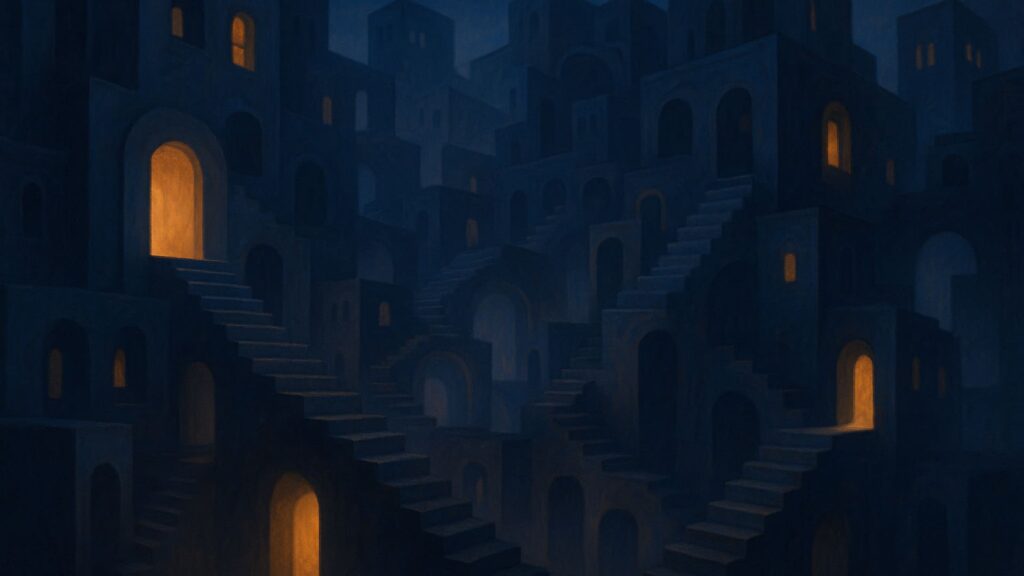The Architecture of the Unseen
There are places we have never stood in, yet they rise within us as if remembered. An empty corridor, a shadowed stairwell, a quiet garden behind a door we have never opened – they visit us not through travel, but through memory that does not belong to us.
These unfamiliar homes of the mind remind us that space itself may be less physical than we think. Like in Windows Into the Self – How Perspective Shapes Reality, our imagination builds interiors that reflect truths we rarely acknowledge.
Rooms Without Keys
What are these spaces that feel both ours and not ours? Perhaps they are made of fragments of forgotten stories, or whispers passed from others, or even shadows of places that never existed in our world at all. They are rooms without keys, and yet we wander them freely.
They are rooms without keys, and yet we wander them freely. The mind, like the universe itself, may carry a hidden cartography, where the invisible bridge between moments suggests time itself might hold hidden passages – and perhaps space is no different.
The Weight of Absence
Absence can feel as tangible as presence. A home unvisited, a street unseen, can weigh upon us like something lost. This weight is not only of what is missing but of what could have been – a life unlived, a door unopened.
This weight is not only of what is missing but of what could have been – a life unlived, a door unopened. Just as the echo of forgotten questions shows how questions linger long after they are asked, so too do these imagined places persist, shaping us in ways we may not notice.
When Memory Becomes Place
Perhaps memory and place are not separate at all. Every remembered moment carries a room, a landscape, a stage where it unfolded. To step into a memory is to inhabit architecture.
But when a place we do not know insists upon being remembered, it unsettles the neat boundary between inner and outer. These unfamiliar homes ask us: is memory confined to what we have lived, or does it stretch into what others have felt, what might yet be, or what never was?
The Cartography of Mystery
If the mind is a map, then these homes are its unmarked territories – the lands drawn in faint ink, labeled only with the warning: Here, there may be more.
And perhaps these are the most honest places of all. They refuse the comfort of certainty. They remind us that being human is not about knowing all the rooms of our world, but about walking endlessly toward the next threshold, guided by echoes we cannot name.
Closing Thought
The unfamiliar homes of the mind are not errors, nor illusions. They are invitations – proof that imagination is not merely a mirror of what we have lived, but a bridge into what is possible. In their silent presence, they remind us that every threshold we cross, whether real or imagined, expands the mystery of who we are.

